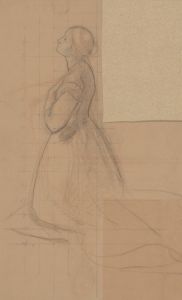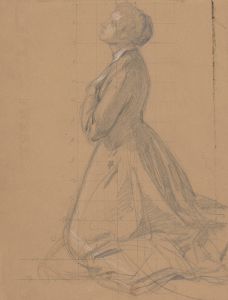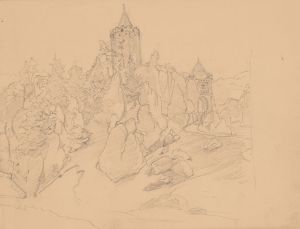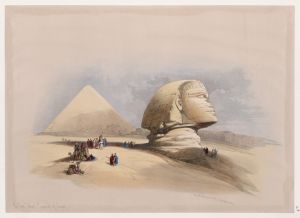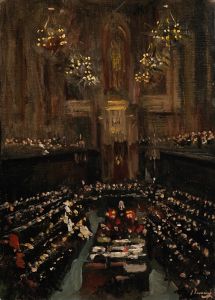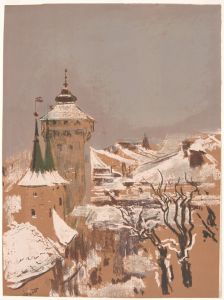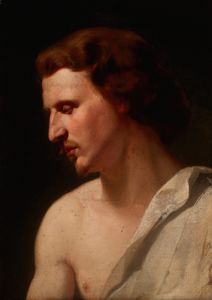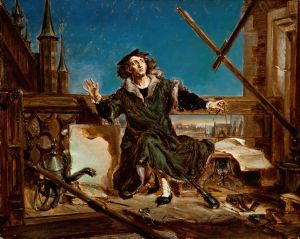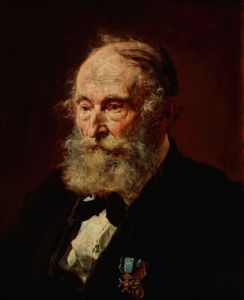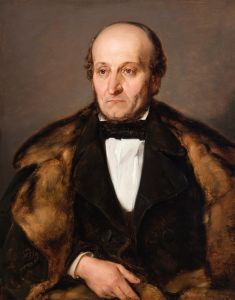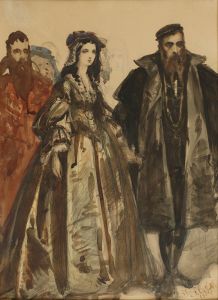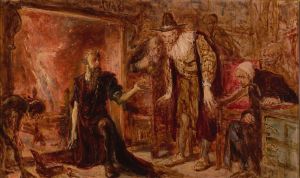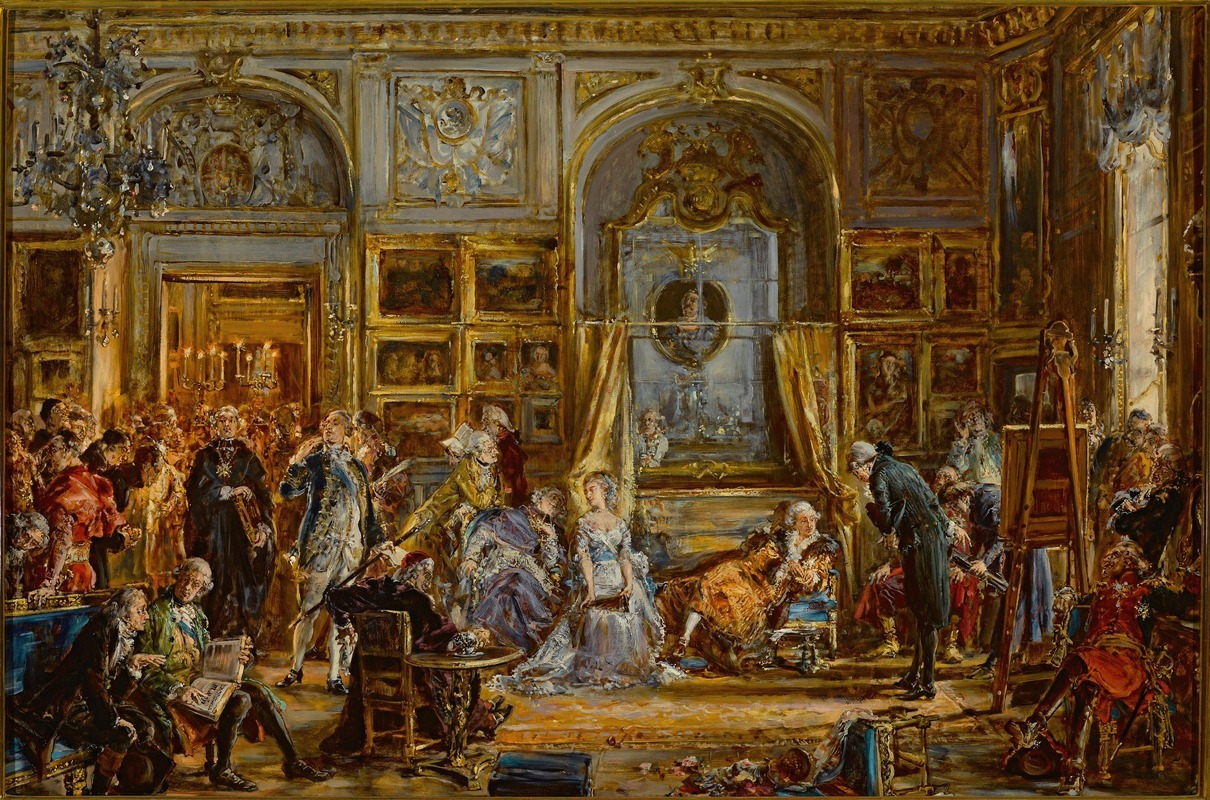
Constitution of the 3 May. Four-Year Seym. Commission of Education. Partition 1795 AD, from the series “History of Civilization in Poland”
A hand-painted replica of Jan Matejko’s masterpiece Constitution of the 3 May. Four-Year Seym. Commission of Education. Partition 1795 AD, from the series “History of Civilization in Poland”, meticulously crafted by professional artists to capture the true essence of the original. Each piece is created with museum-quality canvas and rare mineral pigments, carefully painted by experienced artists with delicate brushstrokes and rich, layered colors to perfectly recreate the texture of the original artwork. Unlike machine-printed reproductions, this hand-painted version brings the painting to life, infused with the artist’s emotions and skill in every stroke. Whether for personal collection or home decoration, it instantly elevates the artistic atmosphere of any space.
Jan Matejko's painting Constitution of the 3 May. Four-Year Seym. Commission of Education. Partition 1795 AD is part of his series titled History of Civilization in Poland. This series, created by Matejko, a renowned 19th-century Polish painter, is known for its detailed and symbolic depictions of pivotal events in Polish history. The painting reflects Matejko's dedication to illustrating the cultural, political, and historical milestones of Poland, often with a focus on the struggles and achievements of the Polish people.
The title of the painting references several significant events and institutions in Polish history. The Constitution of 3 May 1791 was a landmark legal document and is often regarded as the first modern constitution in Europe and the second in the world, following the United States Constitution. It was adopted by the Four-Year Sejm (1788–1792), a legislative assembly that sought to reform and strengthen the Polish-Lithuanian Commonwealth in the face of internal challenges and external threats. The Commission of National Education, established earlier in 1773, is also mentioned in the title. It was one of the first ministries of education in Europe and played a crucial role in reforming the Polish education system.
The year 1795, also referenced in the title, marks the final partition of Poland by the neighboring powers of Russia, Prussia, and Austria. This event led to the complete dissolution of the Polish-Lithuanian Commonwealth and the loss of Polish sovereignty for over a century. Matejko's works often explore the tension between Poland's cultural and political achievements and the external forces that sought to undermine its independence.
While the painting's title suggests a connection between these historical elements, specific details about the composition, visual elements, or symbolism within this particular work are not widely documented. Matejko's historical paintings are known for their intricate detail and use of allegory, often incorporating historical figures, events, and symbols to convey deeper meanings about Poland's history and identity.
As with many of Matejko's works, this painting likely serves as a visual narrative that intertwines key moments in Polish history, emphasizing themes of resilience, reform, and the struggle for sovereignty. However, without further detailed analysis or documentation of this specific painting, additional interpretations or descriptions cannot be provided.





